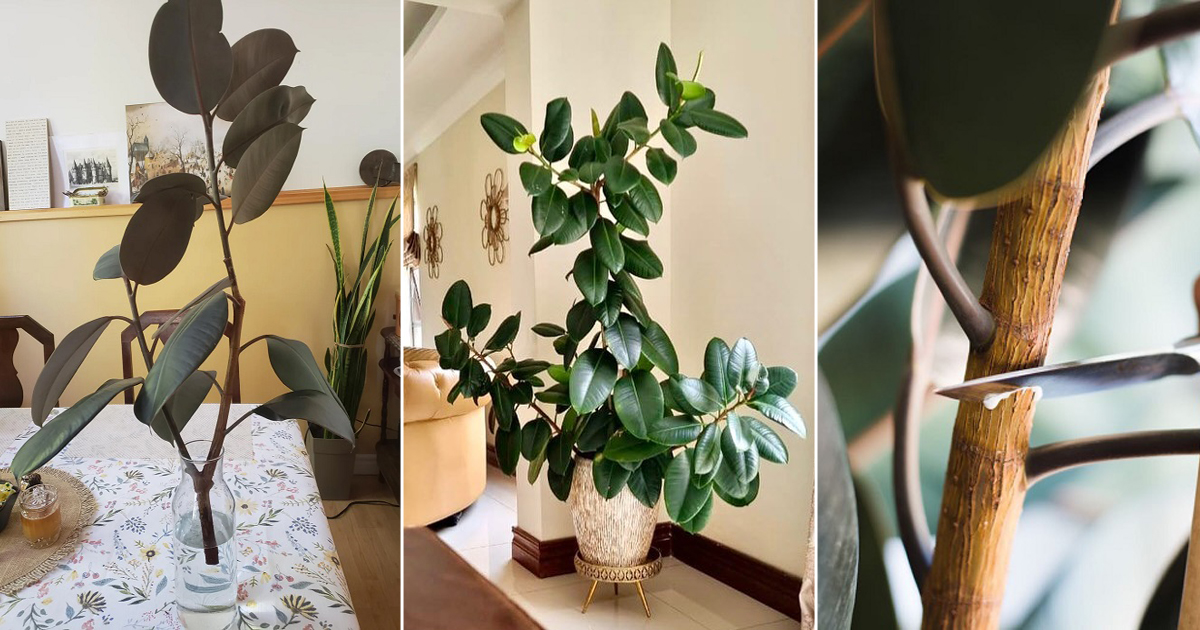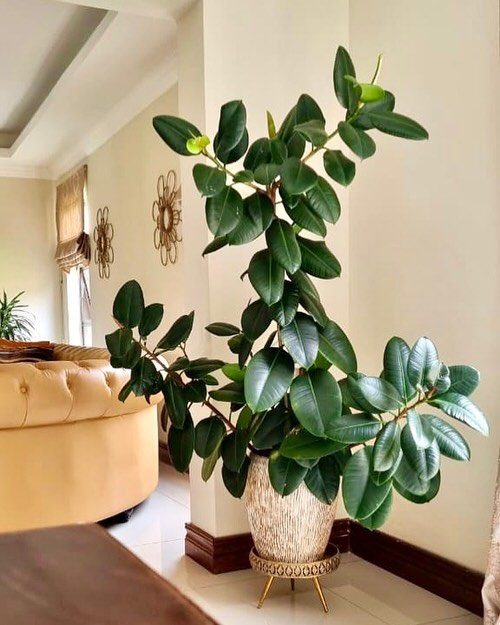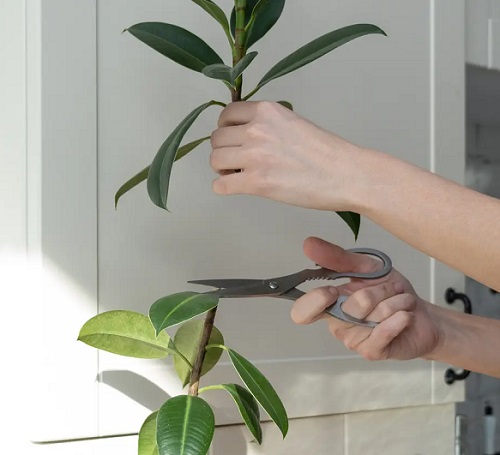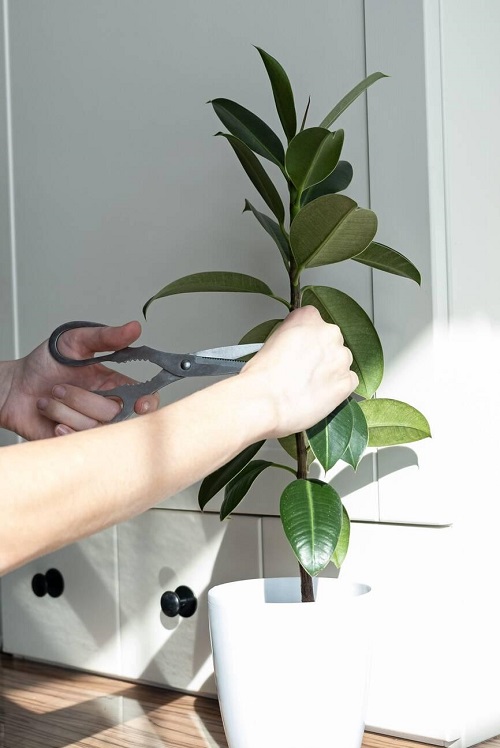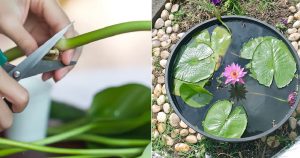Learn How to Make a Rubber Plant Bushy with this detailed guide and make this beautiful houseplant more attractive.
Do you want to know How to Make a Rubber Plant Bushy, then check out this post with effective tips and tricks that give this houseplant a lush and dense appearance.
How to Make a Rubber Plant Bushy
1. Try pruning
Step 1: Have a plan
Observe your plant, check the location and existing growth. For example; if you have kept rubber plant on shelf or desk, it has to be retained a short, round shrub.
Keep in mind that pruning side branches promotes new growth to fill in the plant’s central part, so select a size that you can crop down to and then enable it to cover itself.
Step 2: Chop any branches which appear out of place
Begin by trimming lower branches that are growing straight horizontally or any disorderly to your desirable shape. Some branches grow curved or more quickly than others. Remove them to maintain a neat look. Also, snip a few branches and foliage from the middle area of the plant to keep it looking very dense.
Step 3: Snip to the desired height
When your rubber plant reached to your desirable height, prune the top leaves before the node. It will impede the plant from dissemination of vertical chutes. For more bushier shrub-like appearance; prune the top off once it attain a maximum height of four feet. This will make the plant grow horizontally and form a round shape instead of growing skinny and tall.
Step 4: Boost foliage coverage by pruning frequently
Consistent pruning is the key for keeping the bushier rubber plant, when you make a cut after the node, sometimes two new branches will begin to emerge from the place where the cut was made. After the plant recovers from the last pruning and shows off new chutes, cut them as well.
Constantly pruning the sidelong growth will provide you with command over how bushy and thick the plant can become.
Step 5: Propagate the new cuttings in the container
Propagating the rubber plant cuttings is very easy, you can have shrub-like appearance by doing this and cover the lower area of the plant. Immediately transplant the stem cuttings that are pruned in the same container or first root in a glass of water. See details in this video here.
2. Propagate rubber plant cuttings
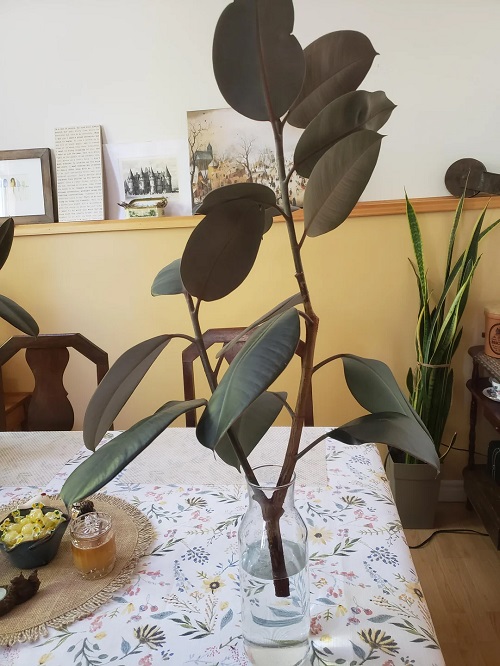
Take a small branch or stem cutting 6-8 inches long from a mature healthy plant. Root it in soil or water, and make the cutting a node for new growth to sprout out of. Plant the cutting directly into the planter it was pruned from. Make sure to keep the soil moist. Don’t forget to dip the cut end in the rooting hormone before planting.
It will be much better to root the cutting first in the water as it result in a healthy established root system.
3. Take a good care after pruning
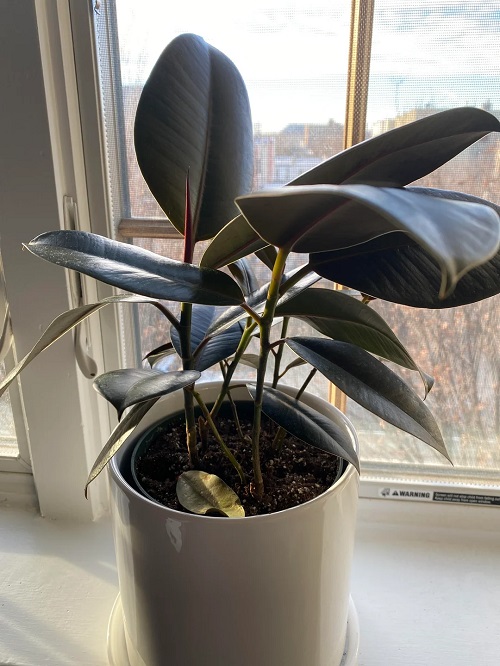
Pruning is a difficult process for plants, and they need proper care after that. Though rubber plants are easy to maintain, the rule of thumb is to provide a good balance of water and sunlight. Keep it in an area with bright indirect light or in front of a south-facing window with a shear curtain. Also, use well-draining soil and avoid overwatering. Read more care details here.
4. How to force side shoots on a rubber tree
Rubber plants can attain a good height indoors in favorable conditions and rapidly outgrow spaces. You can prune the plant to boost the growth of new branches and have a bushier rubber plant. Don’t wait to chop off the plant, as you can prune a young rubber plant to stimulate branching.
If you cut the main trunk above the branches, many side branches will germinate from it.
5. Notching
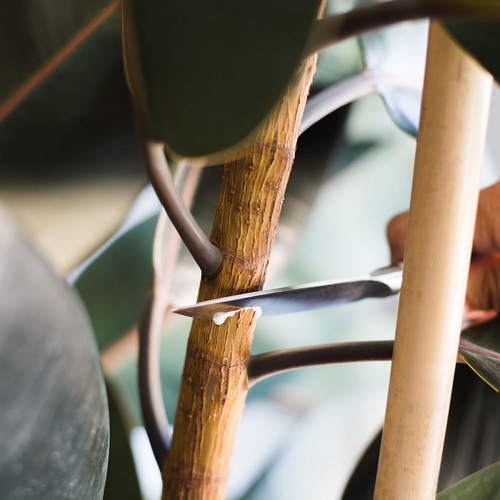
Keep in mind that notching is not pruning. Instead of pruning, make a deep cut at angle above the node. Create a cut up to 1/4th thickness deep 1/4 around the trunk. Just a deep cut will branch out, after a month new branches will germinate.

